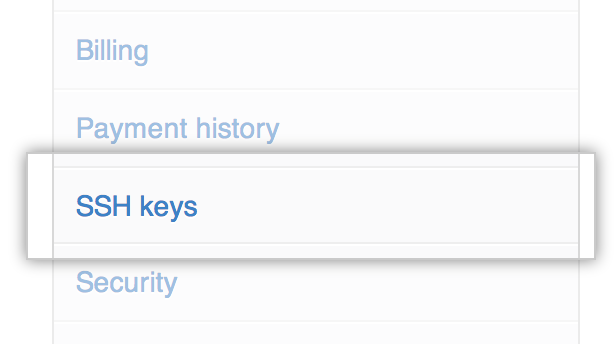Manually Generating Ssh Keys In Mac
You generate an SSH key through Mac OS X by using the Terminal application. Once you upload a valid public SSH key, Gerrit can authenticate you based on this key. An SSH key consists of a pair of files. One is the private key, which you should never give to anyone. Generate SSH keys on Windows. Install PuTTY. The PuTTY command-line SSH client, the PuTTYgen key generation utility, the Pageant SSH authentication agent, and the PuTTY SCP and SFTP utilities are packaged together in a Windows installer available under The MIT License for free download from the PuTTY development team. Launch PuTTYgen.

Mar 22, 2019 ssh-keygen is a program that can be found on Mac, Linux, and other UNIX-based operating systems. For more information about the program, check out Wikipedia's entry on the subject here: ssh-keygen - Wikipedia. When you generate your keys, you will use ssh-keygen to store the keys in a safe location so you can bypass the login prompt when connecting to your server. To generate SSH keys in Mac OS X, follow these steps: Enter the following command in the Terminal window. Ssh-keygen -t rsa This starts the key generation process. Jul 06, 2017 How to manually add ssh keys for key-authentication. That's it, you have manually copied your ssh key from the server to the client and can now access your server, via ssh, using ssh key. I’ve been fortunate until recently that my personal SSH key was acceptable. So, how can you have two or more SSH keys available on your system at any one time? I am running a Mac but I assume this would work on Linux as well. It’s not hard and when setup, it works really well. Getting Started. The first part is generate a new SSH key.
You will use the Terminal application on Mac OS X to generate an SSH key which will allow you to login to your server without manually entering a password, while giving you a higher level of security that comes from using key pairs.
Mac OS X Terminal
The terminal provides you with a text-based command line interface to the Unix shell component of Mac OS X. In order to get started with it, follow these steps:
- Open your Finder and select “Utilities” from the “Go” menu bar.
- Find the Terminal application in the list of utilities.
- Double-click the Terminal application to start it.
Once you’ve launched the terminal, you’ll see a screen with a prompt that contains your username as well as the name of your machine.

Generating an SSH key
Die sims 3 generations key. An SSH key consists of a pair of files. One is the private key, which you should never give to anyone. The other is the public key. You will need a public key to log into cloud servers you provision. When you generate your keys, you will use ssh-keygen to store the keys in a safe location so you can bypass the login prompt when connecting to your server.
To generate SSH keys in Mac OS X, follow these steps:
- Enter the following command in the Terminal window. This starts the key generation process. When you execute this command, the
ssh-keygenutility prompts you to indicate where to store the key. - Press the ENTER key to accept the default location. The
ssh-keygenutility prompts you for a passphrase. - Type in a passphrase. You can also hit the ENTER key to accept the default (no passphrase). However, this is not recommended.
Please note that you will need to enter the passphrase a second time to continue.
Manually Generating Ssh Keys In Mac Pro
After you confirm the passphrase, the system generates the key pair.
Your private key is saved to the id_rsa file in the .ssh directory and is used to verify the public key you use belongs to the same cloud server. It's important to never share your private key with anyone, it is equivalent of your password!
Manually Generating Ssh Keys In Macbook Pro
Your public key is saved to the id_rsa.pub file and it is the key you'll upload to our cloud service. You can save this key to the clipboard by running this: